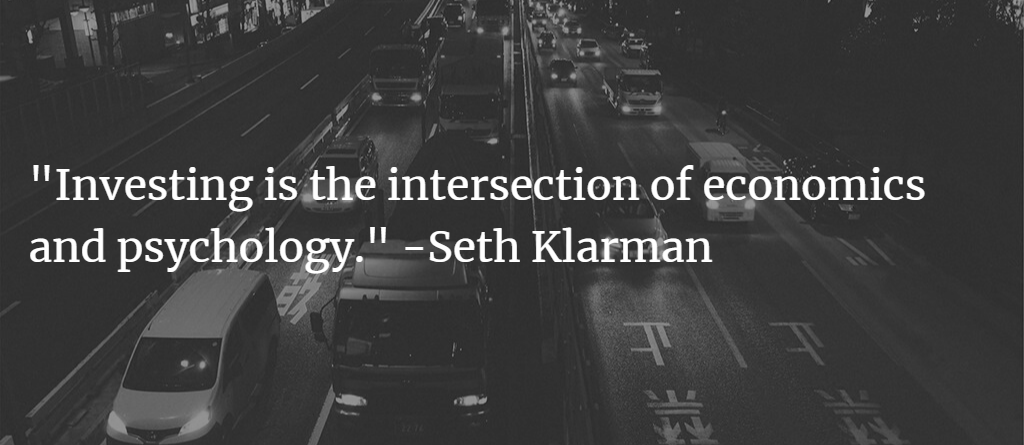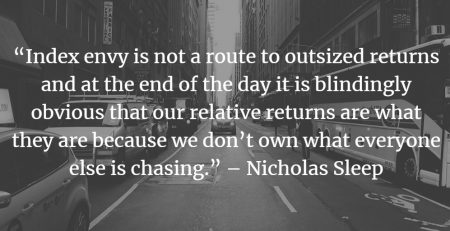In our last post in our investor education series, Active vs Passive: Why the Efficient Market Hypothesis is Wrong, we introduced the concept of rational actors, people that analyze every piece of available information and arrive at an optimal solution to maximize their expected utility, and irrational actors; people that use mental shortcuts and heuristics to arrive at just “good enough” solutions. The first being what economists think people ought to do, and the second being what psychologists observe people actually doing.
In this post and the post to follow, we will explore the gap between these two types of individuals, and dive into some of the ingrained behavioral biases that we all, whether we want to admit it or not, tend to suffer from.
Our brains are wired to avoid pain and to seek pleasure. These natural instincts are powerful, and while they were extremely useful when we were hunter gathers, the same instincts can be very troublesome when making investment decisions.
For example, most people would be happy with an investment that has returned 7% per year on average since its inception. Furthermore, even if those investors were told that the investment in question had mostly up years but with a few sizable down years, they would probably still be on board. But presented with that same investment, during the panic of a 30% down year, and suddenly none of that other information matters. The fight or flight instinct kicks in and many investors find themselves selling at the lows to simply avoid any further pain. We just saw this play out with the great recession, and even more recently with the downturn last December.
The reason for this is that investors don’t always have the time nor the ability to arrive at perfectly optimal decisions. Instead, they strive to make good decisions by simplifying the choices available, using the information that is most readily available, and extrapolating it into the future. Therefore, when everything in the news seems negative, investors tend to think that things will be negative forever. In taking these mental short-cuts, investors become susceptible to ingrained behavioral biases that may lead to irrational and costly decisions.
Behavioral biases come in two main forms:
-
Emotional biases: stem from impulse, intuition, and feelings. Broadly how humans react to information.
-
Cognitive biases: relate to how we think and process information. Broadly how humans manage information.
This post will focus on the main emotional biases. These include loss aversion, overconfidence, self-control, endowment, regret aversion, and status quo. The next part of the series will focus on the different cognitive biases that investors face.
It is useful to learn about these different behavioral biases so that we can identify them and limit their effects through a well-structured and disciplined investment process.
Behavioral Biases Part 1: Emotional Biases
Loss aversion is the concept that investors suffer more pain from losses than they get in pleasure from equally sized gains.
Confusingly, loss aversion can cause both panic selling (fed by a desire to minimize losses), as well as continuing to hold onto losing positions for too long. Some investors are reluctant to exit a losing position, as that ‘crystallizes’ the loss- it makes it real. “I’ll hold onto to it until it comes back up”. Often things do come back up, but in reality, if the reasons you hold that stock have fundamentally changed, then you are going to be better off selling now and re- investing elsewhere.
A disciplined approach to investment based on fundamental analysis is the best way to alleviate the impact of loss aversion. Though it is impossible to avoid the pain of losses entirely, analyzing investments and considering the probabilities of all future outcomes helps guide us to rational decisions.
Whether we feel pain around a loss is of no importance when it comes to how that stock will perform going forwards. We focus a huge amount on detailed fundamental analysis, so often when prices decline, we have the confidence in the underlying company to not only hold onto positions, but often even add to them at depressed levels.
Overconfidence bias is the concept that investors often think they know more than they do or that they have more control over outcomes than they do. For example, very successful and driven people in other arenas often assume they will be just as good at investing as they have been at other aspects of their life. These very smart people often get a rude awakening the first time their portfolios drop by significant amounts. There is nothing like success to blind one to the possibility of failure.
Some negative side effects of overconfidence are that it leads investors to both under-diversify and to trade excessively on news events- thinking they can second guess how the rest of the market will react to these events. This fallacy has been proved many times- the markets are complex and unpredictable in the short-term; wise investors do not try and ‘out-think’ the crowd.
To reduce overconfidence bias, investors need a structured investment process that builds in considerable challenges and questioning, continually asking ‘how, or where could I be wrong’. It is also vital to review past decisions- to acknowledge both losers and winners in an objective manner, allowing for learning from both.
Investors need to accept that they can’t out think the market in the short term, and instead focus on what they can do- selecting high quality businesses that they can buy at attractive prices.
Self-control bias is the concept that investors have difficulty pursuing long-term goals. For example, when Warren Buffet was asked why more people didn’t copy his investment framework, his response was that no one wants to get rich slowly. Which is often the case.
Self-control bias is also related to the concept of hyperbolic discounting. This is a fancy way of saying that people disproportionately value the present over the future. This causes problems when we try to rationally compare the costs and benefits between time periods. A benefit might be huge on an absolute scale, like say being able to retire comfortably, but it will still be disproportionately punished the longer it takes to realize. And when compared to a smaller short-term benefit, many people opt for the instant gratification option. Successful and prudent investing takes time and patience.
To reduce self-control bias, investors need to have long-term financial goals accompanied by a well-documented investment plan which they strictly and patiently adhere too.
Endowment bias is the concept that investors value what they already own more than what they don’t own. For example, an investor might grow attached to an investment that has performed extremely well for them in the past and continue to hold it, regardless of fundamentals, or position sizing. This often shows up when investments are inherited or have been held a long time, and are thus familiar and comfortable. Investors easily become emotionally attached to stocks.
Ultimately the endowment bias causes investors to hold investments too long and take excessive risk through under-diversification.
To reduce endowment bias, investors should ask themselves if their portfolio started every single day in cash- would they still buy all those positions they hold right now? Often, the answer will be no.
Regret aversion is the concept that investors often act out of fear of being wrong and the desire to avoid feeling regret. This is strongly related to status quo bias, which is arguably when regret aversion becomes so high that investors cannot make any decisions at all.
As such, investors tend to either do nothing (status quo bias) or herd into perceived low-risk or well-known investments because ‘everyone else is doing it’ (regret aversion). There’s less regret about a wrong decision if you’re all wrong together. For example, owning GE, or passively investing in the broad market, or staying out of the market all together. Once a path is taken, investors are often reluctant to adapt their investments to changing circumstances. Investors tend to be very good at taking in a bunch of new information and interpreting in such a way that all their prior conclusions remain intact, and they aren’t required to make any hard decisions.
This is probably the hardest bias to overcome, but if investors can view their return objectives in coordination with their risk tolerance, the benefits of adjustments to an optimal investment allocation become more apparent. Rigorous fundamental analysis also brings with it the confidence in conviction to be different from the crowd and buy something when others may be selling.
Conclusion
Understanding and detecting emotional biases is the first step in overcoming the effect of those biases on investment decisions. We here at Globescan have numerous checks built into our investment decision process to ensure we aren’t falling prey to any of these issues, the most important of which is our long-term investment horizon.
The more one studies the markets, the more it becomes clear that investors that can think long-term have a huge advantage over investors that are constantly worried about what the market will do in any given month. Consider the theoretical investor who fell asleep for the past 10 years, to awake with the market up more than 200%. They would have slept through the European Debt Crisis, the energy market crash, the election of Donald Trump, Brexit, numerous -10% months, etc.
The more one pays attention to the daily noise in the market, the more they are susceptible to making behavioral errors. The patient long-term investor lets the market do what it’s going to do, knowing that the assets they own are inherently long-term instruments that will generate a near-certain return over the medium to long-run. To bring home the point, consider the following two charts, both of the S&P 500 price returns over a two-year period ending 2018:








